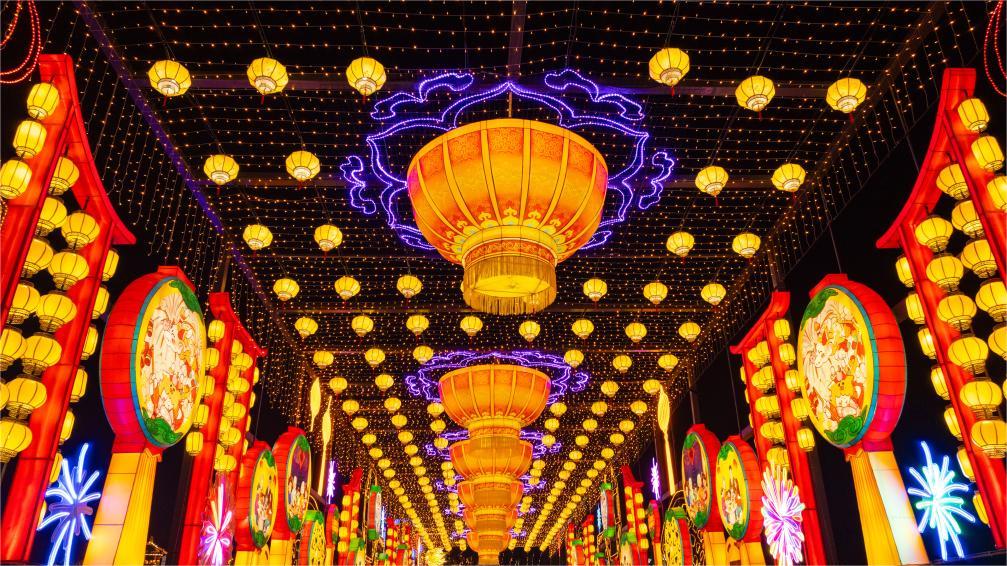Eight must-see streets and lanes in Quanzhou, SE China's Fujian
Quanzhou in southeast China's Fujian Province is not only designated as a "World Heritage City" by UNESCO, but is also a place that is buzzing with life. The ancient Quanzhou city is the soul of Quanzhou, whose charm lies in its streets and lanes.
The following eight streets and lanes are recommended to those visiting the city for the first time. Here, they can explore the city’s thousands of years of history and rich culture hidden behind the tiles.
Xijie Street
Xijie is a historical street and a symbol of prosperity of Quanzhou. It is home to landmarks such as Kaiyuan Temple, East and West Pagodas, and Dingxin Pagoda, mansions that belonged to prominent figures in history, and Western-style buildings of modern times. The street is also adorned with numerous cultural relics and ancient houses from the Tang (618-907) and Song (960-1279) dynasties. Together, they showcase Quanzhou's rich history and folklore.
This is the oldest, but at the same time the youngest street in the city. Dating back to as early as the Tang Dynasty, it is the most well-preserved ancient street block in Quanzhou.
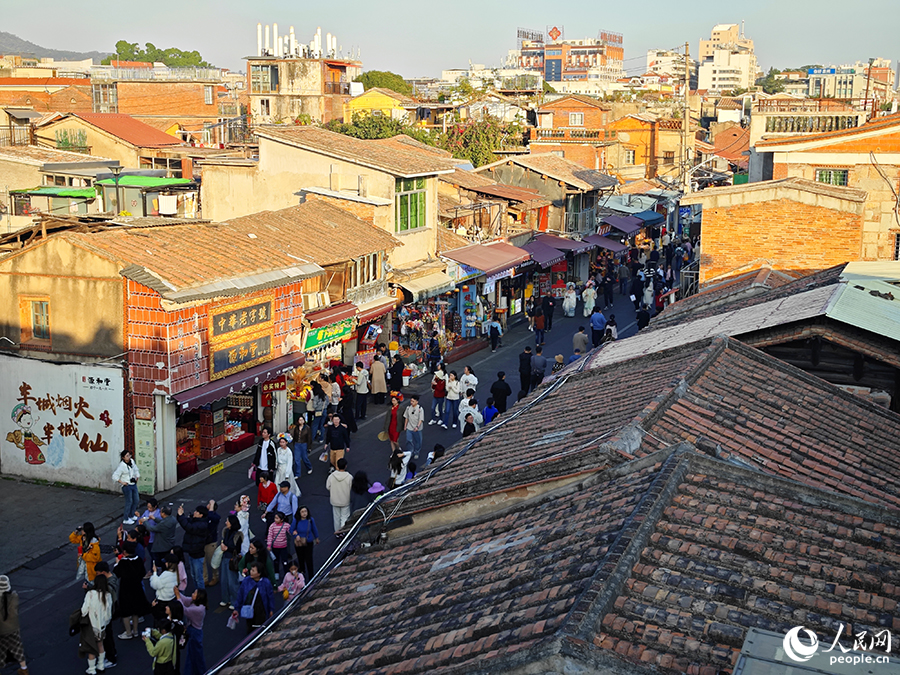
Aerial photo shows Xijie Street, a historical street in Quanzhou city, southeast China's Fujian Province. (People's Daily Online/Huang Dongyi)

Photo shows Kaiyuan Temple on Xijie Street, a historical street in Quanzhou city, southeast China's Fujian Province. (People's Daily Online/Huang Dongyi)
It is one of the best-known photography spots in Quanzhou. There are several rooftops here, including a tourist service center.
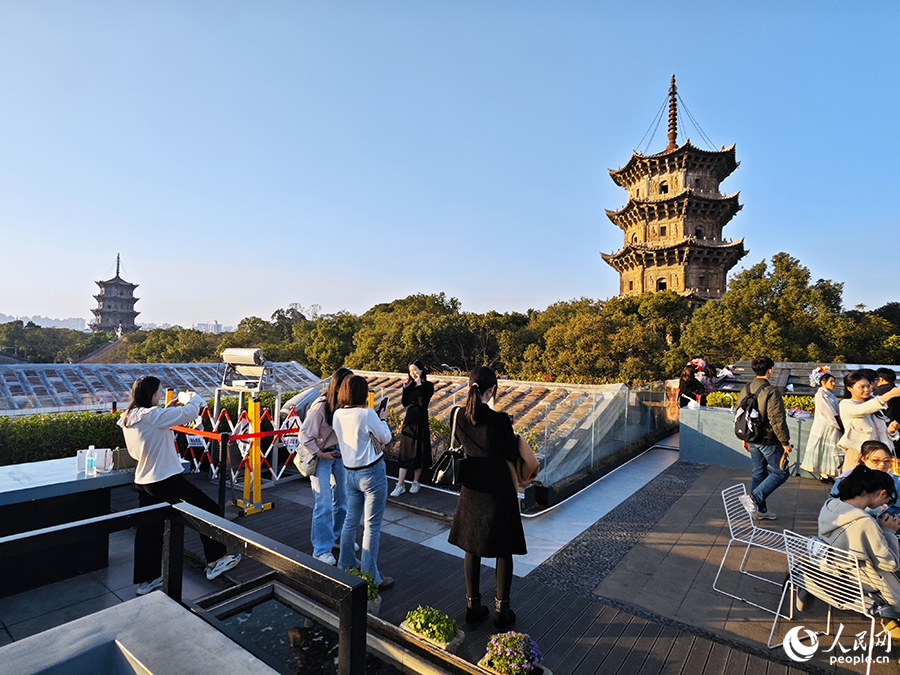
Tourists take photos on the rooftop of the tourist service center of Xijie Street with the East and West Pagodas in the background. (People's Daily Online/Huang Dongyi)
Xiangfeng Alley
Xiangfeng Alley offers an excellent view of the East Pagoda. This tranquil ancient lane leads directly to the bustling Xijie Street. The small, scattered houses, which form a striking contrast with the distant tall pagodas, create a rare perspective.

Photo shows Xiangfeng Alley in Quanzhou city, southeast China's Fujian Province. (People's Daily Online/Huang Dongyi)
Tielu Temple, which literally means “Iron Furnace temple”, is located here. Dating back to the Five Dynasties and Ten Kingdoms (907-979) period, it was originally a place for blacksmithing and iron smelting. Legend has it that the incense burner enshrined in the temple was the iron smelting furnace used by military governor Liu Congxiao to smelt the first furnace of iron in Quanzhou.
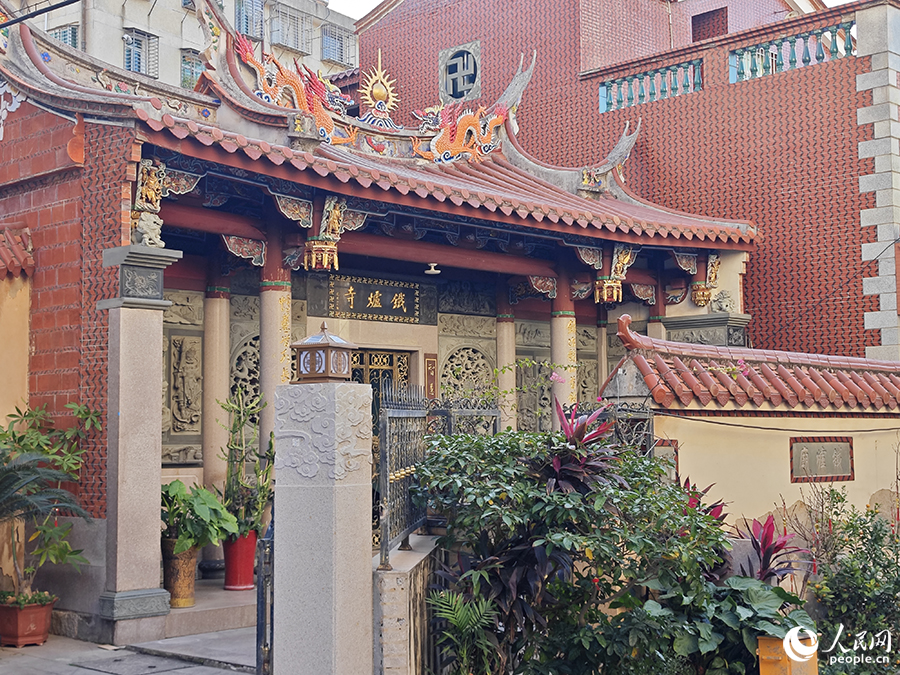
Photo shows Tielu Temple on Xiangfeng Alley in Quanzhou city, southeast China's Fujian Province. (People's Daily Online/Huang Dongyi)
Zhongshan Road
Zhongshan Road is the central axis, a north-south line that runs through the center of the ancient city of Quanzhou.
The Qilou compound on Zhongshan Road combines the features of the city’s traditional residences with the essence of Southeast Asian architecture, serving as a successful combination of Chinese and Western elements.

Photo shows Zhongshan Road in Quanzhou city, southeast China's Fujian Province. (People's Daily Online/Huang Dongyi)
Zhongshan Road is like a radiant pearl necklace, stringing together important cultural relics and historical sites. Walking down the road feels like flipping through a large book.
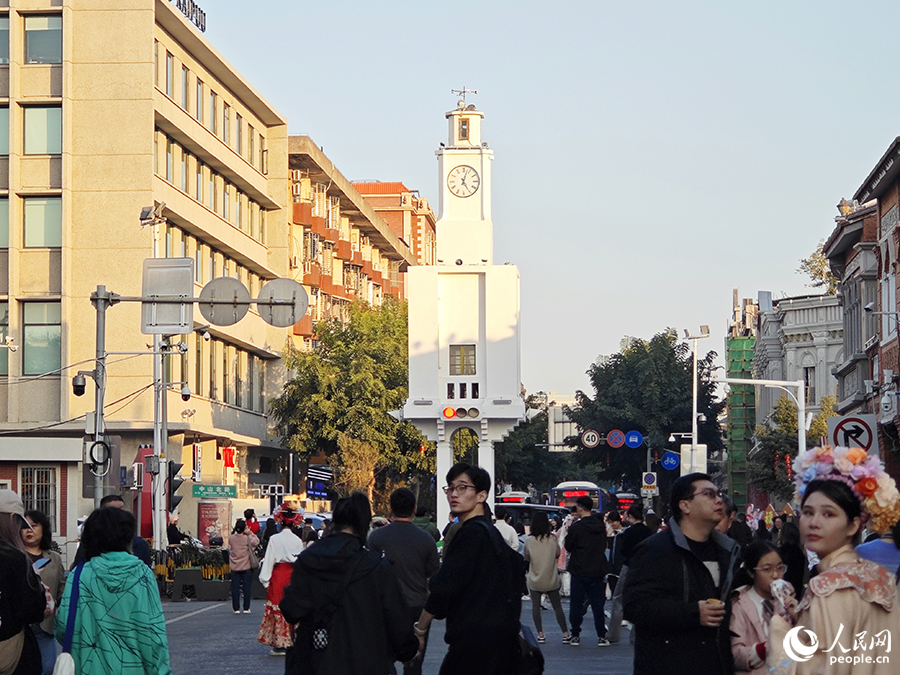
Photo shows the bell tower on Zhongshan Road in Quanzhou city, southeast China's Fujian Province. (People's Daily Online/Huang Dongyi)
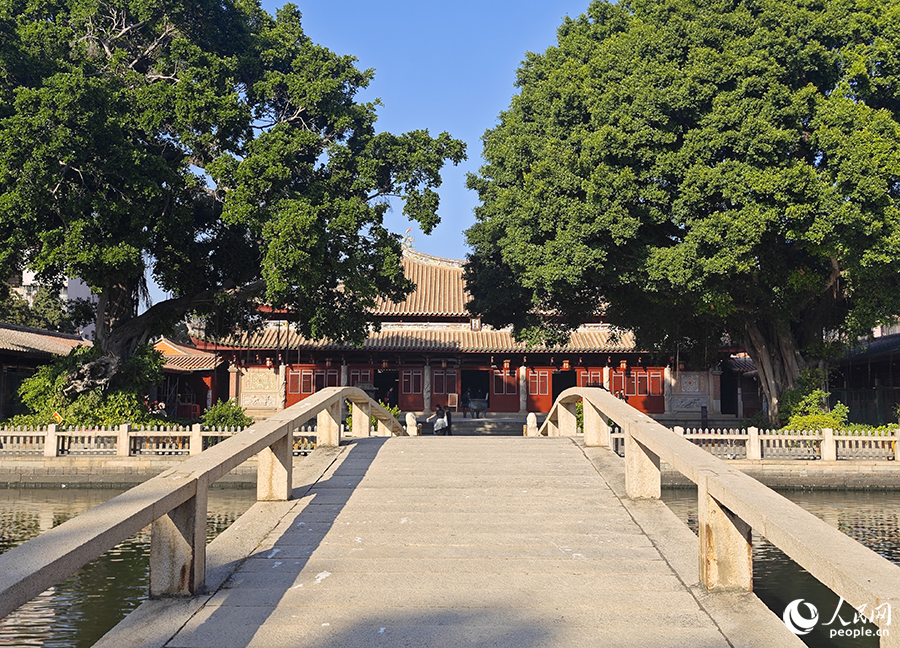
Photo shows the Confucius Temple on Zhongshan Road in Quanzhou city, southeast China's Fujian Province. (People's Daily Online/Huang Dongyi)
Hua Alley
Hua Alley, which literally means the “Alley of flowers”, originated in the late Qing Dynasty (1644-1911) and subsequent years, when numerous artificial flower shops gathered here. Local residents would shop for flowers for weddings, funerals, and festivals here, filling the alley with activity.
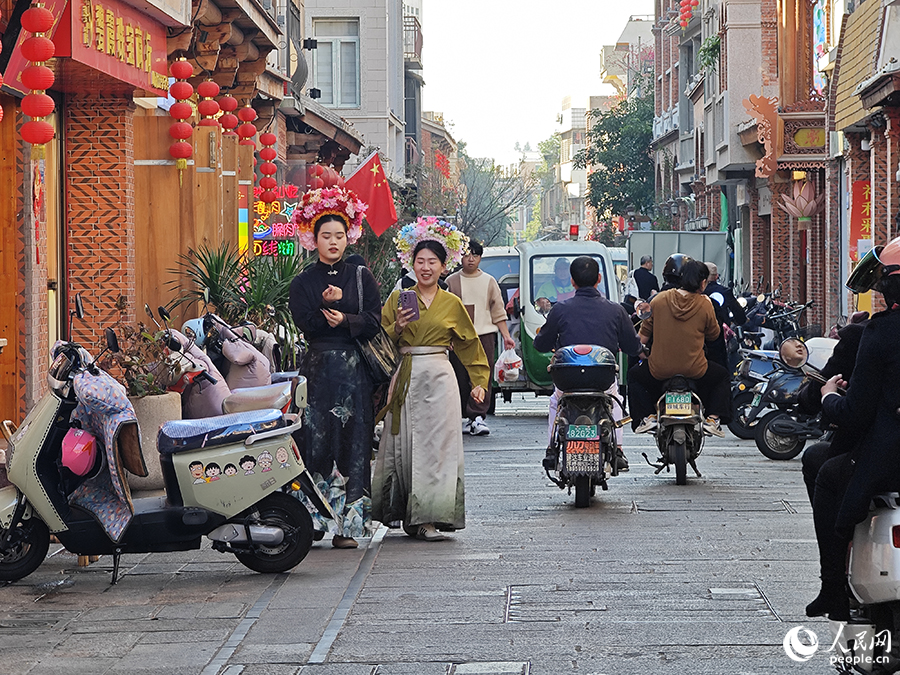
Photo shows Hua Alley in Quanzhou city, southeast China's Fujian Province. (People's Daily Online/Huang Dongyi)
There are colorful western-style buildings, century-old photo studios, a women's school whose premises were a mansion donated by overseas Chinese, and Quanzhou Catholic Church with its pink exterior, all of which documented unforgettable moments of history.

Photo shows Hua Alley in Quanzhou city, southeast China's Fujian Province. (People's Daily Online/Huang Dongyi)
Jinyu Alley
During the Northern Song Dynasty (960-1127), Fujian Transport Commissioner Xie Zhonggui built a mansion here. Under the bureaucratic system of the time, Xie, a third-rank official, was presented with a purple bag decorated with golden fish, “jinyu” in Chinese. Later, a plaque inscribed with the characters “Jinyu Mansion” was hung on the house, giving the alley its name.
The alley showcases the charm of the city’s traditional architecture, exudes a vibrant creative energy, and offers authentic Quanzhou cuisine, epitomizing the city’s cultural essence.

Photo shows Jinyu Alley in Quanzhou city, southeast China's Fujian Province. (People's Daily Online/Huang Dongyi)
Tumen Street
Tumen Street is an ancient street with a rich cultural heritage, blending both Chinese and Western architectural styles. It is adorned with ancient buildings such as Qingjing Mosque, Confucius Temple, and Tonghuai Temple of Guan Yu and Yue Fei.

Photo shows Tonghuai Temple of Guan Yu and Yue Fei on Tumen Street in Quanzhou city, southeast China's Fujian Province. (People's Daily Online/Huang Dongyi)
Tonghuai Temple of Guan Yu and Yue Fei, with its abundant incense offerings and a constant flow of visitors, is the largest existing martial temple in Fujian. Qingjing Mosque, which witnessed the prosperous maritime trade period of Quanzhou from the 10th to the 14th centuries, is the oldest mosque in China featuring the Arabic architectural style.

Photo shows Qingjing Mosque on Tumen Street in Quanzhou city, southeast China's Fujian Province. (People's Daily Online/Huang Dongyi)
Nanjun Road
Once known as Nanjun Lane, the street is home to the renowned Chengtian Temple and Xiayuan Garden built by Shi Lang, a Chinese admiral in the Ming (1368-1644) and Qing Dynasties. On the west side of the lane, an imperial examination hall once stood where scholars would compete for official positions.
In recent years, Nanjun Lane has been revamped and developed into a brand new commercial street. It has been renamed as Nanjun South Road and Nanjun North Road, but people still prefer to call it Nanjun Lane.

Photo shows Chengtian Temple on Nanjun Lane in Quanzhou city, southeast China's Fujian Province. (People's Daily Online/Huang Dongyi)
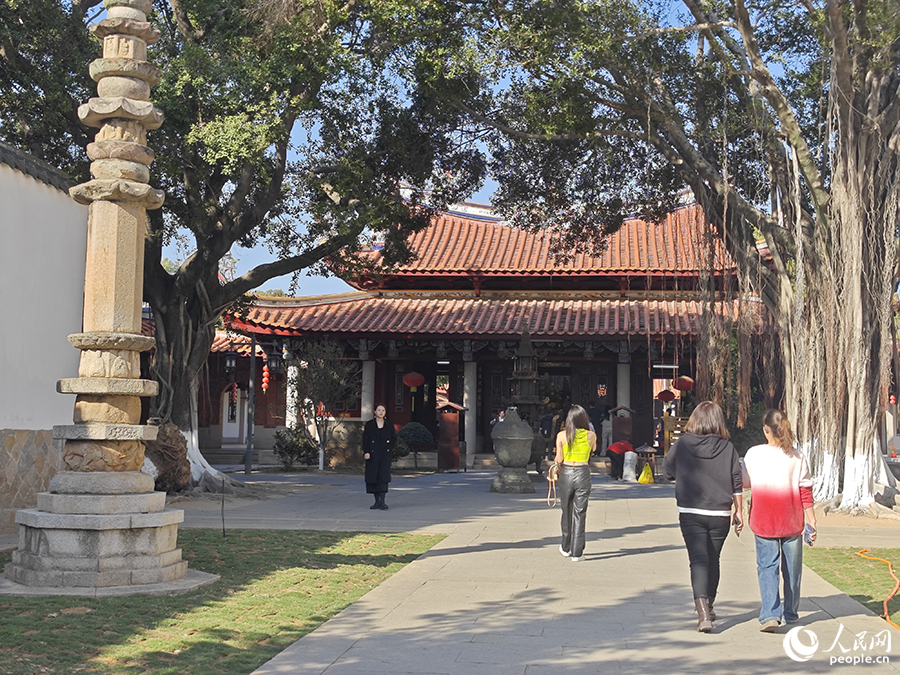
Photo shows Chengtian Temple on Nanjun Lane in Quanzhou city, southeast China's Fujian Province. (People's Daily Online/Huang Dongyi)
Tianhou Road
Tianhou Road is located in the southern part of the city, and is named after Tianhou Temple on the road. It is a perfect choice for those who want to avoid the hustle and bustle and experience the leisurely side of Quanzhou.
Tianhou Temple in Quanzhou was built in the second year of the Qingyuan Era of the Southern Song Dynasty (1127-1279). In the age of ships with masts and sails, when sailing across unpredictable seas, people placed their hopes of a safe return under the protection of Chinese sea goddess Mazu. Today, Tianhou Temple in Quanzhou is the largest Mazu temple, built to the highest standard in the world, serving as a guardian to people's courage and dreams.

Photo shows Tianhou Temple in Quanzhou city, southeast China's Fujian Province. (People's Daily Online/Huang Dongyi)

Outside Tianhou Temple is Tianhou Road. (People's Daily Online/Huang Dongyi)
The Site of Deji Gate, located in front of Tianhou Temple, is one of the longest-used and largest sites of an ancient city gate made of stones in China. This archaeological site, unearthed through scientific excavation, contains architectural remains from different dynasties in China's history. It witnessed the historical development and evolution of the ancient city of Zayton (Quanzhou), and the region to the south of Quanzhou.

Photo shows the Site of Deji Gate in Quanzhou city, southeast China's Fujian Province. (People's Daily Online/Huang Dongyi)
Photos
Related Stories
- Online activity explores vibrancy of SE China's Quanzhou
- In pics: 22 World Heritage sites in SE China's Quanzhou
- Dive into an audio journey in SE China's Quanzhou
- Quanzhou, a treasure trove of cultural heritage
- Quanzhou: Where culture and commerce converge
- Exploring Quanzhou: Walking in the footsteps of Marco Polo
Copyright © 2024 People's Daily Online. All Rights Reserved.







